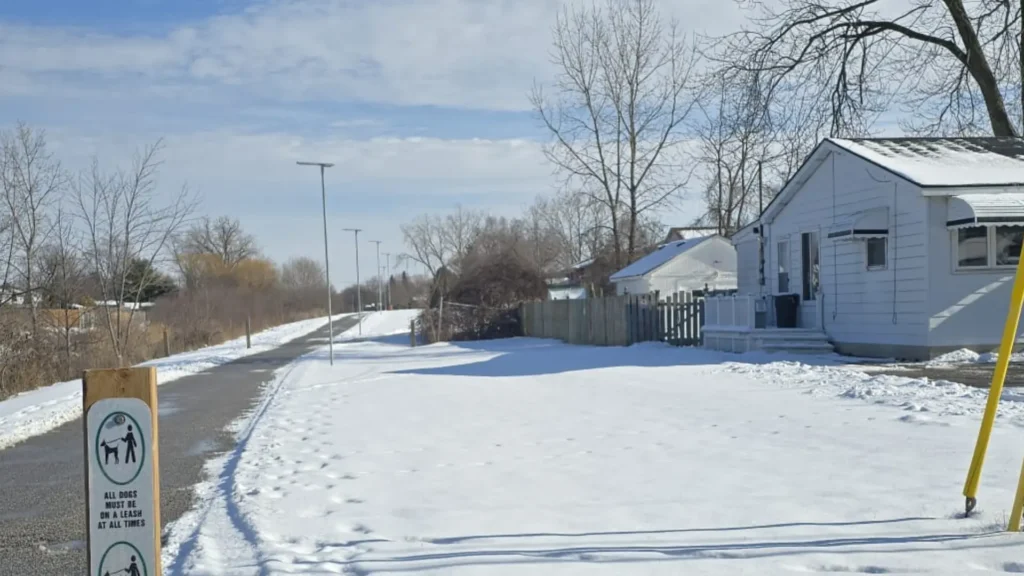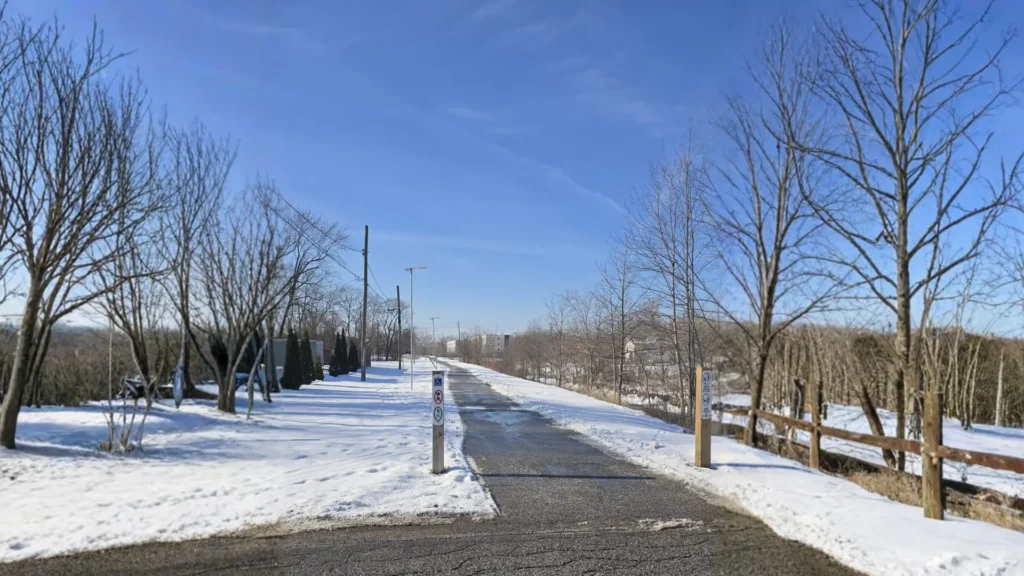Project Background
Canada is known for its stunning natural landscapes and long, harsh winters that last from November to March each year. Daylight hours drop to fewer than eight, while nights are long with frequent snowfall and persistent sub-zero temperatures. The project location sits in a central Canadian province where average winter temperatures range from –15°C to –25°C, with extreme cold plunging below –30°C. These conditions place tremendous stress on urban infrastructure—especially street lighting.
Traditional grid-powered streetlights incur high winter electricity costs (rising by more than 30% due to extended lighting hours) and are vulnerable to outages caused by snowstorms. These interruptions increase risks such as traffic accidents and community safety concerns.
Aligned with the Canadian federal government’s “Green Infrastructure Plan” and “Carbon Neutrality 2050” targets, the city launched a pilot program deploying solar streetlights on selected residential streets. Covering roughly 5 km of neighborhoods and main roads, the project aimed to reduce operating costs, improve energy resilience, and enhance residents’ winter living conditions. The Atlas series from SRESKY was chosen for its proven reliability in extreme environments and its track record of more than 3,500 successful global tender projects.
Core Requirements and Challenge Analysis
After analyzing climate data, community feedback, and existing lighting systems, the project team identified several essential requirements:
• Extreme Low-Temperature Resistance
Frequent winter temperatures below –20°C (-4°F) reduce battery efficiency and threaten component stability. The lighting system needed to support a discharge range from –20°C to +60°C (–4°F to +140°F) to ensure reliable performance.
• Long Endurance During Snowy and Cloudy Periods
With only 4–6 hours of winter sunlight and frequent overcast days, snow often accumulates on panels, interrupting charging. The system required more than 10 days of continuous lighting capability during extended snowy or rainy periods.
• Efficient Energy Management
To maximize limited winter solar energy, the system needed advanced power regulation and sensor-based control to extend battery life.
• High Safety and Reliability
Bright, uniform illumination is critical on icy roads. Luminaires needed to exceed 2000 lm, provide 5700K light (Ra>70), and deliver Type II light distribution. IP65 waterproofing and IK08 impact resistance were required to withstand harsh weather and external force.
• Simplified Installation and Maintenance
Winter maintenance is dangerous and costly. Lights needed an all-in-one design with modular components for quick, cable-free installation and direct on-pole replacement.
These requirements accurately reflect the challenges of solar lighting in high-latitude regions—conditions that the Atlas series is specifically engineered to overcome.
2. Technical Solution Design
After evaluating multiple suppliers through product testing, durability simulations, and cost-benefit analysis, the project selected the SRESKY Atlas solar streetlights for their cold-climate optimization and intelligent system design.
Core Technology 1: ALS 2.3 Intelligent Light Control & TCS Temperature Control System
The ALS (Adaptive Lighting System) 2.3 technology played a central role in project success. It predicts lighting demand based on historical light data and automatically adjusts power output. When consecutive cloudy days are detected, ALS lowers brightness strategically to preserve battery life, ensuring lighting continuity through more than 10 consecutive snowy or rainy days. This overcomes the typical winter charging limitations seen in conventional solar streetlights.
The TCS (Temperature Control System) protects the battery through precise thermal management. It maintains a safe charging range of 0°C to 45°C and supports discharging from –20°C to +60°C. With BMS support, charging efficiency increases by more than 30%, preventing low-temperature capacity loss. Field testing shows that TCS extends battery cycle life beyond 2,000 cycles at –20°C—far above industry averages.
Core Technology 2: High-Efficiency Photovoltaics & PIR Smart Sensing
The Atlas series integrates high-efficiency monocrystalline solar panels, enabling fast charging (6.7–10 hours) even under short winter sunlight. The battery uses automotive-grade lithium-ion cells for deep-cycle durability.
Built-in PIR sensors (120° detection angle, up to 8 m range) support three lighting modes:
-
M1: 30% baseline brightness; full brightness on PIR activation until dawn
-
M2: 100% for the first 5 hours; 25% (PIR-triggered) for the next 5 hours; 70% until dawn
-
M3: 70% brightness throughout
These “on-demand” modes provide more than 30% energy savings. LEDs use OSRAM chips at 230 lm/W for high-efficiency illumination.
Robust Industrial Design
The aluminum-alloy and PC construction offers compact strength with IP65 and IK08 protection against snow, freezing rain, and hail. All components—battery, controller, and LED module—are modular, cutting maintenance time by 50%. An optional hybrid charging mode automatically switches to AC when the battery drops below 30% and returns to solar above 70%, improving reliability in severe winters.
3. Project Outcomes and Impact
Throughout the winter season, the system maintained a 100% lighting rate with zero failures. ALS and TCS technologies successfully navigated 12 consecutive days of blizzards, outperforming endurance expectations.
Significant Social Value
-
Enhanced Safety: Slip-related accidents reduced by 20%.
-
Improved Quality of Life: Nighttime activities became safer, boosting community engagement.
Outstanding Economic & Environmental Benefits
-
Zero electricity expenditure and 90% lower maintenance costs
-
Carbon reduction equivalent to planting 500 trees, directly supporting national climate targets
Conclusion
The Canadian Winter Street Solar Lighting Project, powered by the SRESKY Atlas series, successfully overcame the extreme challenges of high-latitude winter environments. Its outstanding performance demonstrates the strong feasibility and immense potential of solar lighting systems in harsh climates—delivering substantial social, economic, and environmental benefits while advancing long-term sustainability goals.

